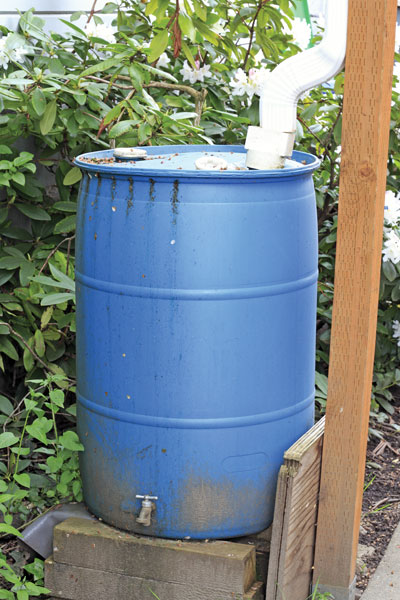
Products
Products
Considering cisterns
There’s a new CSA standard for cisterns.
July 5, 2012 By Kevin Wong
Acistern is a large vessel that is used to hold a reserve of water. Cisterns can be located above or below ground, and come in a range of sizes and shapes with varying features.
Acistern is a large vessel that is used to hold a reserve of water. Cisterns can be located above or below ground, and come in a range of sizes and shapes with varying features.
 |
|
| Many early cultures realized the value of saving rainwater, and we still do. Advertisement
|
Many people in dry or rural areas have cisterns to back up their regular water supply. In some parts of Canada, a cistern is used as the primary source of water for a household. Several companies sell ready-made cisterns for people who want to install them and others will custom build a cistern to exact specifications. CSA recently released the CSA B126 Standard – Water Cisterns for public review. This document offers these companies a clear standard on how to build and install water cisterns.
People have been storing water in cisterns for thousands of years and some still do, like many on the coastal islands of British Columbia. Many early cultures realized the value of saving rainwater, rather than allowing it to run off. They built large jars and later big containers for the purpose of storing rainwater. Some cisterns could also be filled from springs or pumped from a well or rivers. The cistern could be used to supplement water supplies during the dry seasons, or for non-potable applications like watering gardens or flushing toilets.
In many regions of the world, you will still see gravity-fed cisterns. These cisterns collect rainwater with open tops or gutter systems. They are mounted on platforms or towers that elevate them above a home or garden. The pull of gravity sucks water into irrigation or home plumbing, allowing the cistern to supply water without using power. A gravity-fed cistern’s rate flow can be controlled with valves, or increased with the assistance of a pump.

|
|
| An old blue cistern collecting water for a homeowner.
|
When a cistern is used to store water for household use, it may have filters installed to clean the water before it reaches the home. Otherwise, people may need to boil the water or use water treatment chemicals to make it drinkable. When used for irrigation, filters are not typically included, since plants are not as vulnerable to algae and other water contaminants.
A belowground cistern can be quite large, and tends to be more efficient than an aboveground cistern, because it is insulated by the earth, does not lose water through evaporation. However, setting up a gravity feed system for a belowground cistern is rather challenging. Many people must install pumps to get water out of a belowground cistern. In regions without electricity, people may use buckets to haul water up from the cistern. In both cases, the classic shape for a cistern is round or rectangular, although other shapes may be made to conform to unusual spaces. The cistern typically has a cap or cover to keep animals, plants and insects away from the water.
Applications for cisterns are multiple in the water world. In areas where the climate is dry or where water is very deep in the ground, a cistern may be the only way to get water to the house; it must be trucked in from a municipal source, collected as rainwater or drawn from the well. Another situation when it may be handy to consider a cistern is when you are dealing with a low yielding well and you already know that there is no chance of getting more yield fast. Most would say drill deeper but, as we all know, the deeper you go, the greater the potential for the need for water treatment requirements. Sometimes the yield chemistry is just so problematic to treat that going the way of a cistern is the only choice versus spending thousands in complex treatment systems. Economics matter today and the cistern is just another option that we should be aware of.
There is yet another more controversial application for cisterns in cities, which is storm water management. Instead of having all the storm water rapidly run off down the drains, utilize some of the hard surfaces to catch the water, and slowly release it to the system via a permeable surface or catchment systems to utilize this water for irrigation.
Slowing down runoff can be done with catchment systems, which hold the water for other uses, such as watering gardens. Rain gardens, trenches filled with rocks and gravel, and permeable paving all allow water to soak into the ground. Anything you put on your land – fertilizers, animal feces, salt, fuels, heavy metals – ends up in storm water runoff.
Commercially, large underground cisterns below large commercial properties would make this economically feasible. Residentially, a rain barrel would apply here.
Today we have a new CSA standard; tomorrow it may end up in the national plumbing code as an option to support water conservation, grey water reclamation and reuse, rainwater catchment applications, storm water management, water treatment and water conservation objectives or segments. Consider cisterns as a viable option today.
Kevin Wong is the executive director of the Canadian Water Quality Association and the manager of the Canadian Association of Pump Manufacturers.
Print this page